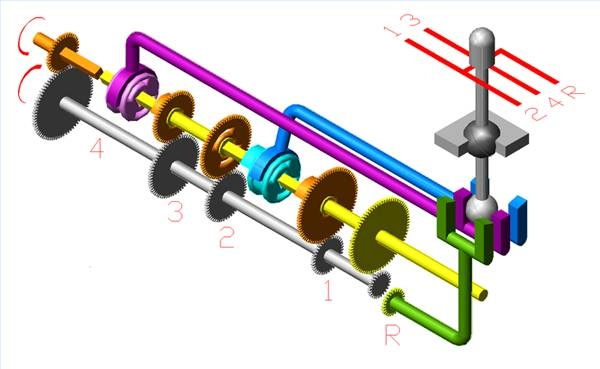
The modern automotive gearbox is essentially just that: a figurative box of gears that are activated when the gear selector, or gearshift, is activated. Each category of speed has a corresponding gear designed to give the automobile the maximum amount of torque and speed. For a manual transmission, when the clutch is engaged, the gearshift can be placed into any desired gear. This can be problematic as the main drive shaft of the gearbox is moving at whatever speed the vehicle is moving. If the gears are shifted into a lower gear than the speed of the main drive shaft, a marked decrease in speed will occur and the engine will over rev, possibly damaging the engine and the transmission.

With an automatic transmission the gear shifting is left to the complex interplay of the main drive shift and the accelerator and brake. The automatic transmission selects the appropriate gear ratio and spins the main drive shaft accordingly depending on how much the driver is engaging the accelerator. When the brake is engaged and the car decreases speed, the counterweights in the automatic transmission housing slow, changing the gear ratios and slowing the main drive shaft. Given the complexity of the counterweights, an automatic transmission is more costly to purchase, maintain and replace. Subsequently, it is also heavier.

For manual transmissions, the gearbox typically accommodates five or six gears, though some high-end makes (Ferrari and Lamborghini) boast of eight-speed transmissions. As the higher gears are engaged, the gearbox allows the engine to use less fuel while providing more power. Each gear engages the main drive shaft at a different point along its length, with the lower gears typically engaging the drive shaft closer to the gearbox. The higher gears, or speed gears, intersect with the drive shaft farther away from the gearbox. This is due to simple physics. Rotating the drive shaft requires a great deal of power and torque; therefore, the lower "starter" gears are located closer to the gearbox and engine.
